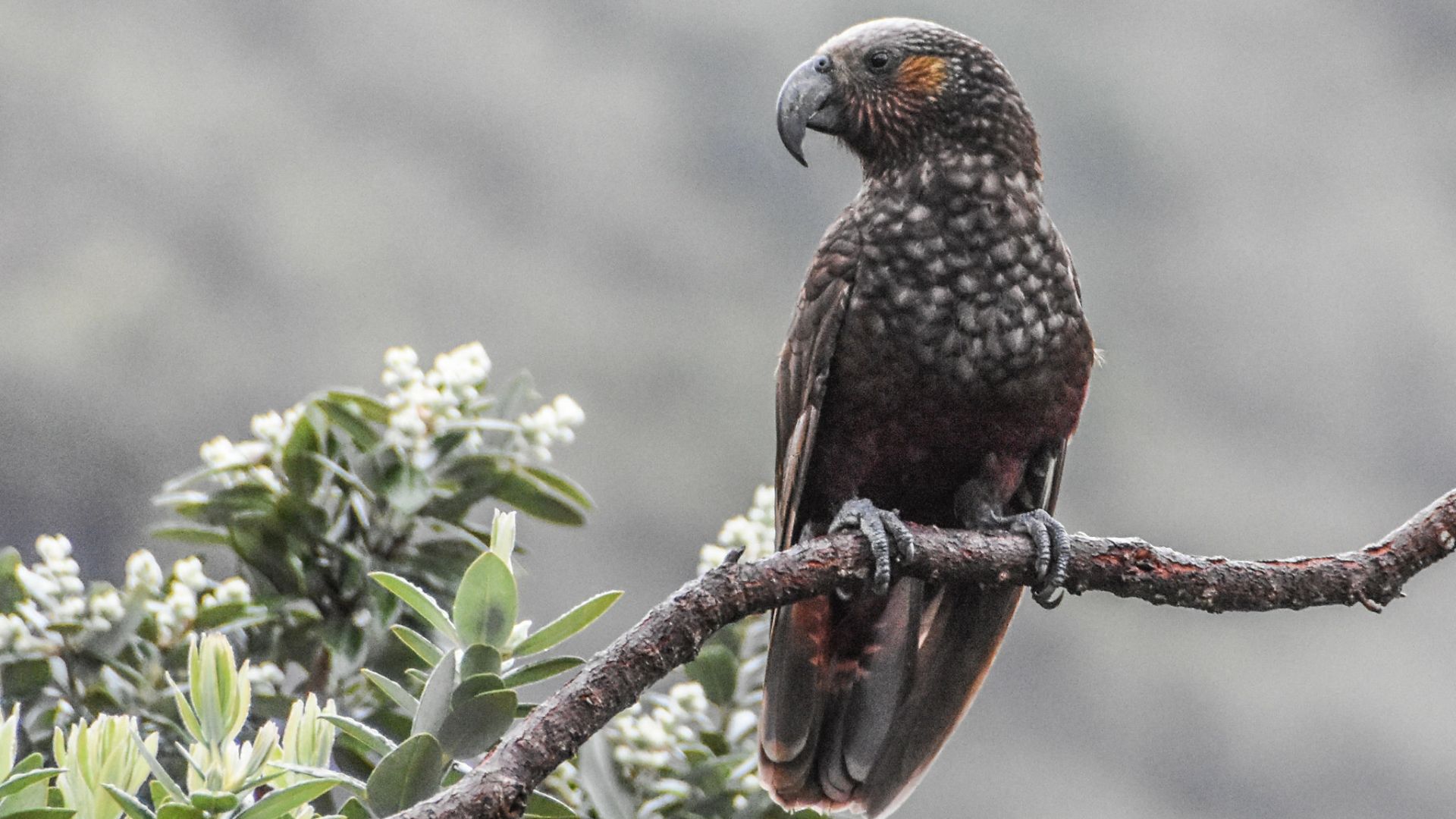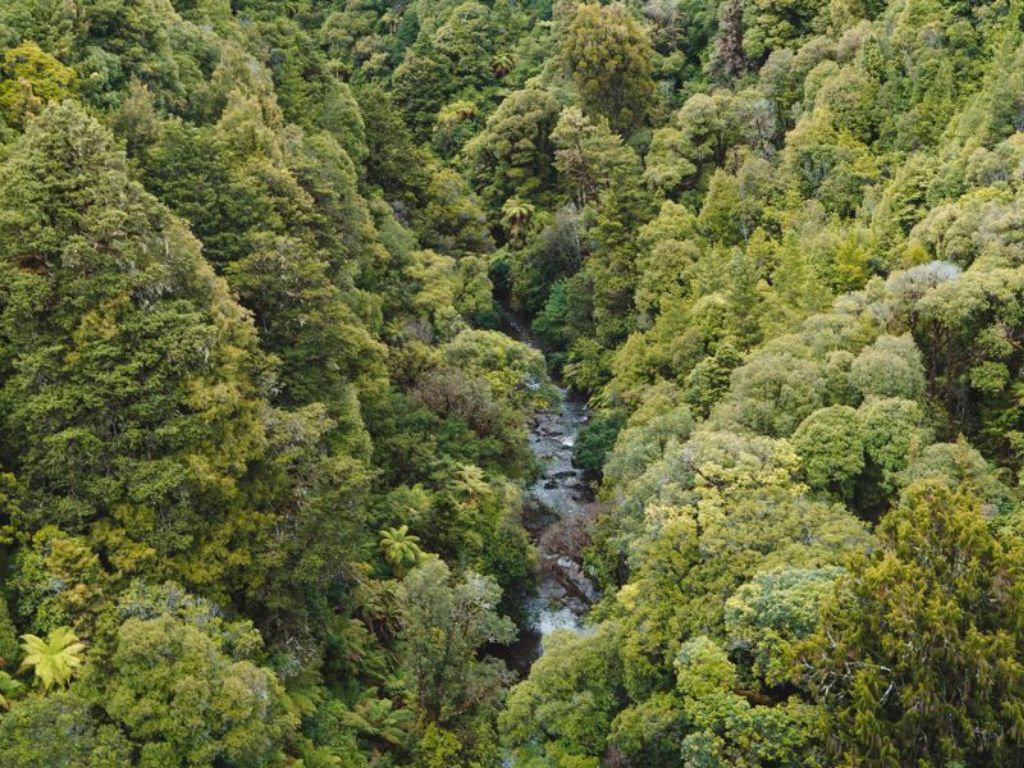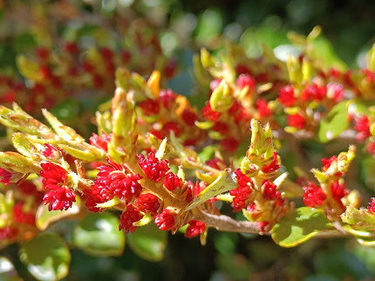Large-scale, frequent and effective introduced predator control helped increase kākā density fourfold and improved the sex ratio.

The study, published online in the New Zealand Journal of Ecology, monitored kākā in Pureora Forest Park, 45 km northwest of Taupō. Kākā numbers went from an estimated 640 birds in 2000 to an estimated 2,600 birds in October 2020.
How do you monitor birds for 20 years?
Not easily, that’s for sure. Wildlife population status and trends can be influenced by multiple ecological processes (e.g. seasonal weather events) that can take many years for monitoring to resolve. Plus, ecological changes (e.g. mast events) can mask the impact of conservation actions.
“Long-term monitoring over many decades is required to detect the trajectory and explain the drivers and patterns of population change and to provide a context for planning conservation actions,” the researchers write.
The monitoring work determined population size (estimates of density or abundance) through the point-based distance sampling method for this study. Distance sampling is a widely used methodology for estimating animal density and abundance in a particular area.
The Waipapa Ecological Area (WEA) in Pureroa Forest Park covers an area of 5112 hectares. Annual distance sampling of kākā happened every year from 2000 to 2020.
Researchers visited 130 points on a grid within Waipapa, and people equipped with laser range finders measured the distance to kākā within a 100m radius of each point. Then, using a mathematical model, they estimated the population density based on detections from those points.
“Annual counts using distance sampling within the southern WEA, Pureora Forest Park, showed that estimated kākā density increased approximately four-fold from a relatively stable population during 2000–2007 to 2020 – most of the increase having occurred from 2012–2014 onward and especially in the last few years.”

The reason for the slow increase in kākā density over many years, followed by a rapid increase, is explained by “the relatively small initial population (apparently persisting well below carrying capacity) and the likely male-biased population sex ratio.”
Predator control in the ancient forest

The recovery of this species is likely a result of long-term, large-scale, frequent and effective pest control leading to improved reproductive success and survival.
“Possum, rat and stoat control was undertaken by DOC either within the southern, eastern and northern blocks of the WEA or over the entire area in 19 years out of the 26-year period between 1993/1994–2019/2020. Rat traps and a variety of toxins (i.e. 1080, brodifacoum, coumatetralyl, diphacinone, and pindone) were delivered in bait stations or bait bags on the ground, and aerial 1080 was applied every 2–7 years.”
To determine the effectiveness of control, researchers monitored relative pest abundance using tracking tunnels and wax tags for rats and possums, respectively.
“Possums and rats were effectively controlled (maintained at low relative abundance i.e. at < 5% for both indices) in 11 of the 19 years pest control was applied.”
What’s mast got to do with it?
Predator control wasn’t the only factor in the population boom. Kākā populations only increase when important forest trees mast – that is, “the synchronous and irregular production of large quantities of flowers, fruits and seeds”.
Mast events can be a double-edged sword. On one hand, mast events create an abundance of food for birds and insects, which can lead to population boosts.
For example, in this study, following a 2011/12 mast event, kākā density almost doubled. Density increased markedly again following the 2017/18 and 2018/19 mast events.
On the other hand, large mast events usually trigger rodent irruptions, which in turn trigger significant increases in mustelid abundance and survival.
Predator control is crucial during a mast to control sky-rocketing rodent and mustelid numbers to protect native wildlife. The study states, ”the efficacy of conservation actions can, therefore, be strongly influenced by both the frequency and intensity of mast events.”

Climate change may be disrupting mast events, which could have severe ecological repercussions.
Mast events are already happening more frequently and lack synchrony in broadleaf species, which could impact the size of resource pulses, predator numbers, kākā productivity, and survival.
The researchers recommend that adequate pest control continue and that kākā monitoring programs and key drivers of successful breeding activity (e.g., the phenology of mast events) should continue and, where possible, expand.

